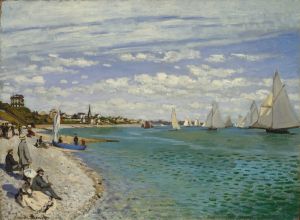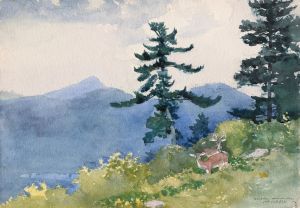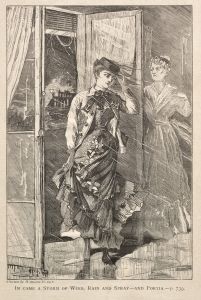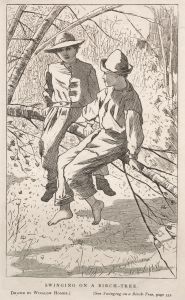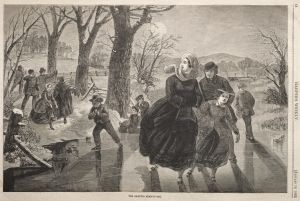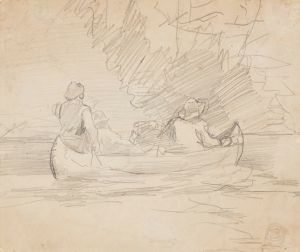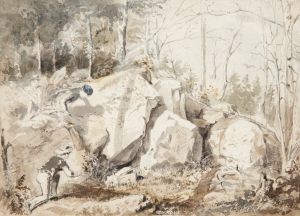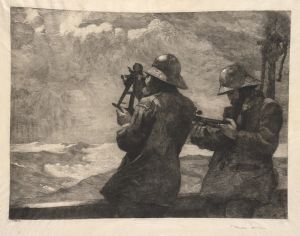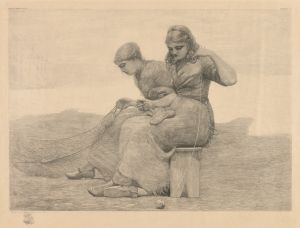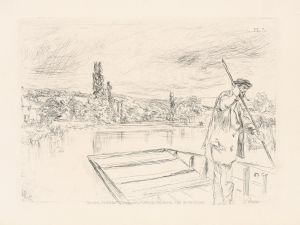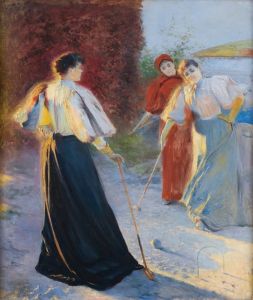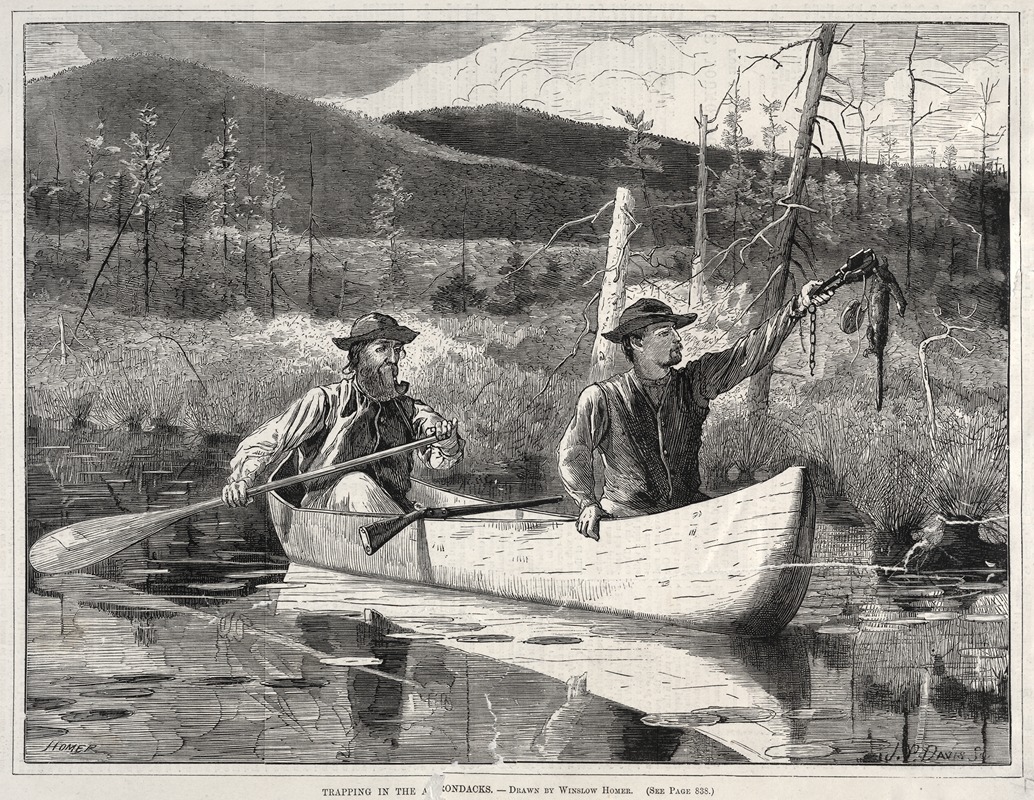
Trapping in the Adirondacks
A hand-painted replica of Winslow Homer’s masterpiece Trapping in the Adirondacks, meticulously crafted by professional artists to capture the true essence of the original. Each piece is created with museum-quality canvas and rare mineral pigments, carefully painted by experienced artists with delicate brushstrokes and rich, layered colors to perfectly recreate the texture of the original artwork. Unlike machine-printed reproductions, this hand-painted version brings the painting to life, infused with the artist’s emotions and skill in every stroke. Whether for personal collection or home decoration, it instantly elevates the artistic atmosphere of any space.
Winslow Homer, an American landscape painter and printmaker, is renowned for his depictions of the American wilderness and rural life. One of his notable works is "Trapping in the Adirondacks," which reflects his fascination with the natural world and the rugged beauty of the Adirondack Mountains in upstate New York. This painting is part of Homer's broader body of work that captures the essence of 19th-century American life and landscapes.
"Trapping in the Adirondacks" was created during a period when Homer was deeply engaged with the theme of human interaction with nature. The Adirondacks, a vast and wild region, provided a perfect backdrop for Homer's exploration of this theme. The painting is believed to have been completed in the late 19th century, a time when Homer frequently visited the Adirondacks and other wilderness areas to sketch and gather inspiration for his works.
In this painting, Homer employs his characteristic realism and attention to detail to depict a scene of a trapper in the midst of the dense forest. The composition is marked by its dramatic use of light and shadow, which enhances the sense of solitude and the harshness of the wilderness. The trapper, a solitary figure, is portrayed with a sense of quiet determination, reflecting the challenging and often solitary life of those who lived and worked in such remote areas.
Homer's use of color and brushwork in "Trapping in the Adirondacks" is notable for its ability to convey the textures and atmosphere of the forest. The muted palette and the careful rendering of the trees and underbrush create a sense of depth and immersion, drawing the viewer into the scene. This attention to natural detail is a hallmark of Homer's work and contributes to the painting's enduring appeal.
The painting also reflects the broader cultural and historical context of its time. During the late 19th century, America was undergoing significant changes, with the expansion of railroads and the growth of cities leading to increased interest in the country's natural landscapes. Homer's work, including "Trapping in the Adirondacks," can be seen as part of a larger movement that celebrated the American wilderness and sought to capture its unspoiled beauty.
Winslow Homer is often celebrated for his ability to capture the spirit of American life and landscapes, and "Trapping in the Adirondacks" is a prime example of this talent. The painting not only showcases Homer's technical skill and artistic vision but also serves as a historical document, offering insights into the lives of those who lived and worked in the Adirondacks during a time of great change and development in the United States.
Overall, "Trapping in the Adirondacks" is a testament to Winslow Homer's enduring legacy as one of America's foremost artists. His ability to convey the beauty and challenges of the natural world continues to resonate with audiences today, making his work an important part of American art history.





